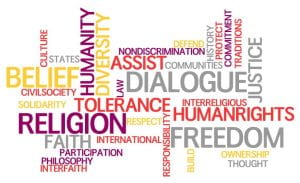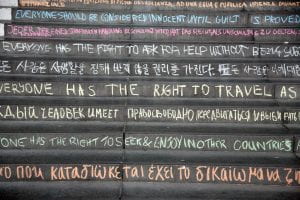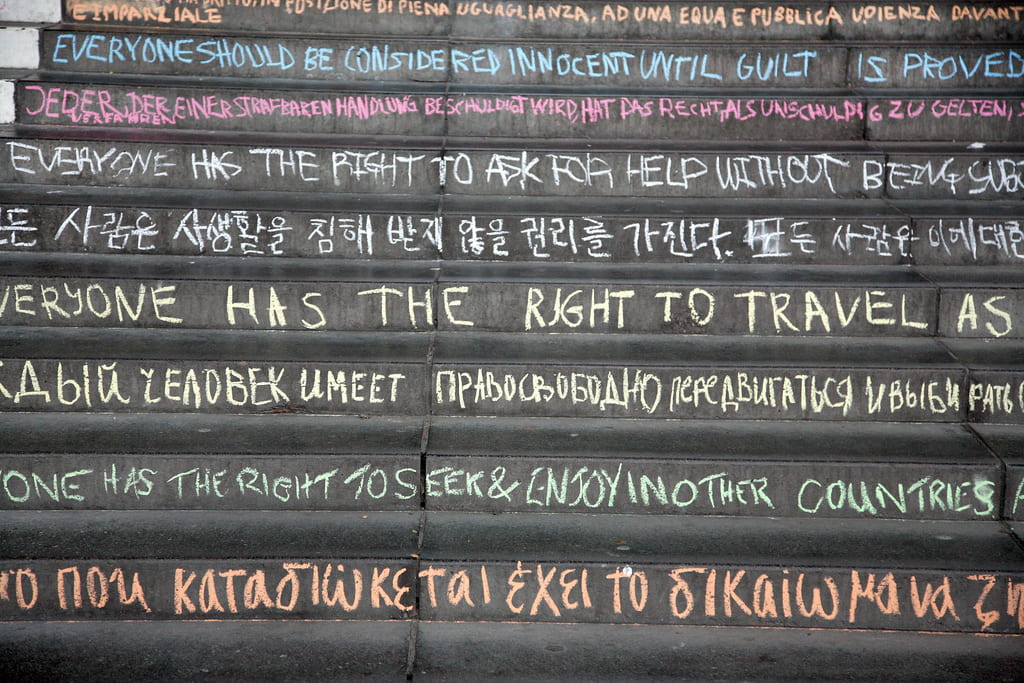
How It All Began
Human Rights Day is celebrated worldwide on December 10, originating on the day the United Nations formally approved the Universal Declaration of Human Rights in 1948. This year is their 70th anniversary of the Universal Declaration of Human Rights, which declares everyone has basic rights, regardless of their nationality, social origin, opinion, etc. It is the most translated document in the world and it appears in over 500 languages. The concept was put into action in 1950 when the United Nations General Assembly invited the States and organizations to approve of declaring December 10 as Human Rights Day. The goal of Human Rights Day is to create a “common standard of achievement for all peoples and all nations: in order to “strive by progressive measures, national and international, to secure their universal and effective recognition and observance”. Furthermore, the aim is to show people that human rights are relevant to us all, often consisting of conferences, meetings, and events surrounding human rights issues.
How the World Celebrates
Countries and organizations around the world celebrate Human Rights Day differently; however, the end goal is the same – to stand for our rights. The theme has varied from year to year. In 2003, the focus was on “Know Your Human Rights, while the theme in 2010 was on “Speak up, Stop Discrimination”, and, in 2017, the focus was on “standing up for equality, justice, and human dignity”. Not only does the theme differ from year to year, but also what each country focuses on. For example, Senegal concentrated on a blind theatre group, while Pakistan held a human rights film festival. Furthermore, Madagascar created a human rights debate contest and Azerbaijan held a writing and art competition on human rights. Additionally, the impact of social media over the recent years is phenomenal. Last year #HumanRightsDay was the most trending topic in Spain, while it was #3 in the United States. As a result, Facebook created a profile frame for Human Rights Day, while Twitter created a special emoji. In fact, some organizations such as the United Nationals, Amnesty International, and the World Health Organization used Twitter as a platform to create conversations on topics such as immigration, reproductive rights, access to clean water, universal healthcare, and equality among communities of color.
How you can celebrate in Birmingham, AL
Around the world many organizations have events; however, there are ways to get involved with the local community. An example of getting involved among college campuses would be where individuals could work with their respective student government to pass a resolution to observe Human Rights Day. Another possibility would be to work with the Birmingham community and create an event to raise awareness a variety of human rights issues such as environmental justice, domestic violence, and gender equality. There could be performances, lectures, and a discussion to highlight the importance of these pressing issues, among others. Before the event starts, there could be the option of having a tabling event, where people can learn more about different organizations across the Birmingham community associated with different aspects of human rights. Furthermore, people could start a social media campaign through Instagram, Facebook, and Snapchat. Another opportunity would be to have numerous free expression walls, all over Birmingham, where people can write down thing such as what human rights means to them, what human rights issues they were impacted by, or what human rights issue they want to spread awareness on. Ultimately, Human Rights Day is about taking the time to focus on different human rights topics and what it means to stand up for not just our own rights, but for others as well.

“All human beings are born free and equal in dignity and rights. They are endowed with reason and conscience and should act towards one another in a spirit of brotherhood.” – Universal Declaration of Human Rights Article 1

